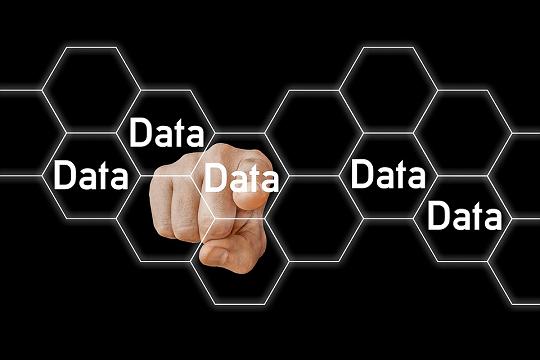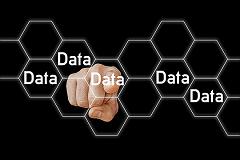Several people believe that data warehouses and operational databases are the same, and their terms are synonymously used in the IT world. However, this is not true. When it comes to data warehouses versus operational databases, both store data; however, this is where the similarity ends. Both of them are different and have a vital role when it comes to database analytics and their architectures. This post will give you an insight into how they are different from each other as well as their importance when it comes to storing data for your business.
What is the difference between operational databases and data warehouses?

The operational data store is a key source of data or information for data warehouses. It has detailed data deployed for the daily operations of your business. This data or information tends to change regularly as updates are released, and they show a reflection of the current and last transactions that have taken place.
The operational database is also referred to as the Online Transactions Processing Database or OLTP for short. It is used for the management of dynamic real-time data for the business.
On the other hand, data warehouses offer users or workers data analysis that is needed for making decisions for the business. This system organizes the data and presents the information in custom formats for accommodating the different needs of users. These systems are referred to as online-analytical processing systems or OLAP, in short.
Note that both operational databases and data warehouses are relational databases; however, their goals are different. Professionals from leading database management and support company, RemoteDBA states that both of these databases have equal importance for every business. The key differences between the two have been listed in the table below-
| Operational Databases | Data Warehouses |
| These databases are created and designed to meet high-volume processing of transactions for the business | These databases are designed for supporting high volume processing of analytics for the business |
| Focuses primarily on current data or information | Deals with historical data and information |
| The updates here are done as per the requirements of the business | This database is no-volatile in nature. New data can be added at regular intervals; however, once this data is added, it cannot be changed |
| This database is generally optimized for simple transactions. This can be done by the retrieval or the addition of single rows at a specific time for every table | This database can be optimized for large data that is complex and unpredictable in nature. The queries access several rows for every table. |
| It deploys tables for data validation and is optimized for the validation of the information that comes into the business during the transactions | This database requires no validation in real-time as the data loaded on the database is consistent and valid. |
| This database offers support to several concurrent clients | The system will support only a few concurrent clients who are relevant to the OLTP |
| These databases are process-oriented | They are primarily subject oriented |
| They are optimized for performing faster updates and inserts for small volumes of data that are relevant to the business | They are optimized for performing faster retrieval of high volumes of information |
| The data in the systems comes in | The data in this database goes out |
| The data accessed is very minimal | A large volume of data is accessed |
| Created primarily for online transactions | Created primarily for analytical processing |
The OLTP system versus the OLAP system
The OLTP system regularly manages operational data. This information is the data that is contained in the operations of the specific system, for instance, bank transactions, ATM transactions, and more.
The OLAP systems manage data that is archival or historical in nature. The data has been collected and stored over a duration of time. For instance, the data collected and stored for the business of the last 10 years for flight reservations. Analysis of this data means you can get meaningful information like reservation trends like the type of people who are mostly traveling, the travel class they choose (business/economy), and more.
The OLAP and OLTP system’s primary difference is the volume of information analyzed in one transaction. The OLTP system can manage several concurrent customers and queries that deal with limited groups or a single person at one time. The OLAP systems have the ability to operate thousands and even millions of files for getting the answer to one query.
Key traits of OLTP databases
- Manages operational information or data
- Its users are tech professionals, clerks, and clients
- It is customer-oriented
- Manages detailed current data needed for making decisions
- Its size is generally 100MB to GB
- The volume of data is generally not very large
- You can access it in both the read/write mode
Key traits of the OLAP database systems
- Manages informational data
- Its users are generally knowledge workers, managers, analysts, and executives.
- The size of the database generally is 100GB-TB
- The system is market-oriented
- Manages data that is historical for summarization, aggregations, and other similar tasks.
- Its access mode is primarily “write” in nature
- Users can access millions of data records at a single time
- The processing speed depends upon the volume of data that is to be extracted. When it comes to complex queries, the processing time can even take many hours.
The architecture of a data warehouse is not the same for every company. The common kinds of data warehouse architecture followed are-
- Basic Data Warehouse
- Data Warehouse with a staging area, and
- Data warehouse with data marts and a staging area.
If you are a business owner and want to deploy both operational databases and data warehouses for your company, you should consult professionals in the field. The IT specialists will evaluate your business’s profile and help you get a custom-built database OLTP and OLAP systems to boost your business’s functionality and performance. Contact companies with proven track records in the field to get the best results. Never rush into choosing them; compare online reviews and customer testimonials to make the right choice!

